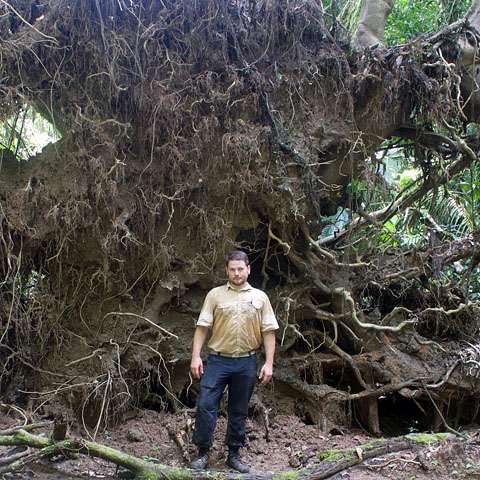Newly discovered protist parasites contribute to the stability of rainforest ecosystems

Tropical rainforests are among the most species-rich areas on earth. Thousands of animal and plant species live there. The smaller microbial protists, which are not visible to the naked eye, are also native to these forests, where they live in the soils and elsewhere. A team of researchers formed by Micah Dunthorn, University of Kaiserslautern, examined them more closely by analyzing their DNA. They discovered many unknown species, including many parasites, which may contribute to the stability of rainforest ecosystems. These results have now been published in the scientific journal Nature Ecology and Evolution.
Insects and other arthropods such as spiders represent the largest and most diverse group of organisms in tropical rainforests. "However, the results of our study question this," says Micah Dunthorn of TU Kaiserslautern, whose research is funded by the German Research Foundation's Emmy Noether Programme. "There may be hundreds of thousands of different insects in a single hectare of rainforest, but the number of protists is likely to be even greater." Protists are microbial eukaryotic organisms, which can be found all over the world.
Dunthorn collected soil samples in lowland rainforests of Costa Rica, Panama, and Ecuador. Together with colleagues Alexandros Stamatakis, Lucas Czech, and Alexey Kozlov from the Heidelberg Institute for Theoretical Studies (HITS) and the Karlsruhe Institute of Technology, the scientists isolated and analyzed the DNA of the microorganisms in Germany.
"We analyzed a total of over 130 million DNA sequences which posed a grand bioinformatics challenge," states Lucas Czech. An initial direct comparison of the sequence data to already known species quickly showed that the majority of the tropical data belonged to completely new, still unknown species.
Via a more detailed analysis of the genetic material, the researchers were able to most probably correctly classify the new species into different types of protist groups. To achieve this, they adapted an existing approach. "Using the so-called phylogenetic placement method, we identified almost all sequences," continues the Kaiserslautern biologist. "These phylogenetic placements allow to better characterize the protist sequences by taking their evolutionary history into account," says Alexandros Stamatakis. In order to analyze the many millions of sequences using the phylogenetic placement method, the team used the "SuperMUC" supercomputer at the Leibniz Rechenzentrum in Munich.
In the rainforest soil samples there were mostly protists. "Most of them belong to a group of single-celled animal parasites, the Apicomplexa," Dunthorn said. The researchers suspect that these parasites may contribute to the biodiversity of the animals in these forests. "They could limit the growth of animal populations by infections," says the biologist. The results also show how complex the connections in the ecosystem of tropical rainforests are. Not only mammals, birds, insects, but also a variety of microorganisms play an important role here.
More information: Frédéric Mahé et al. Parasites dominate hyperdiverse soil protist communities in Neotropical rainforests, Nature Ecology & Evolution (2017). DOI: 10.1038/s41559-017-0091
Journal information: Nature Ecology & Evolution
Provided by Technische Universität Kaiserslautern




















